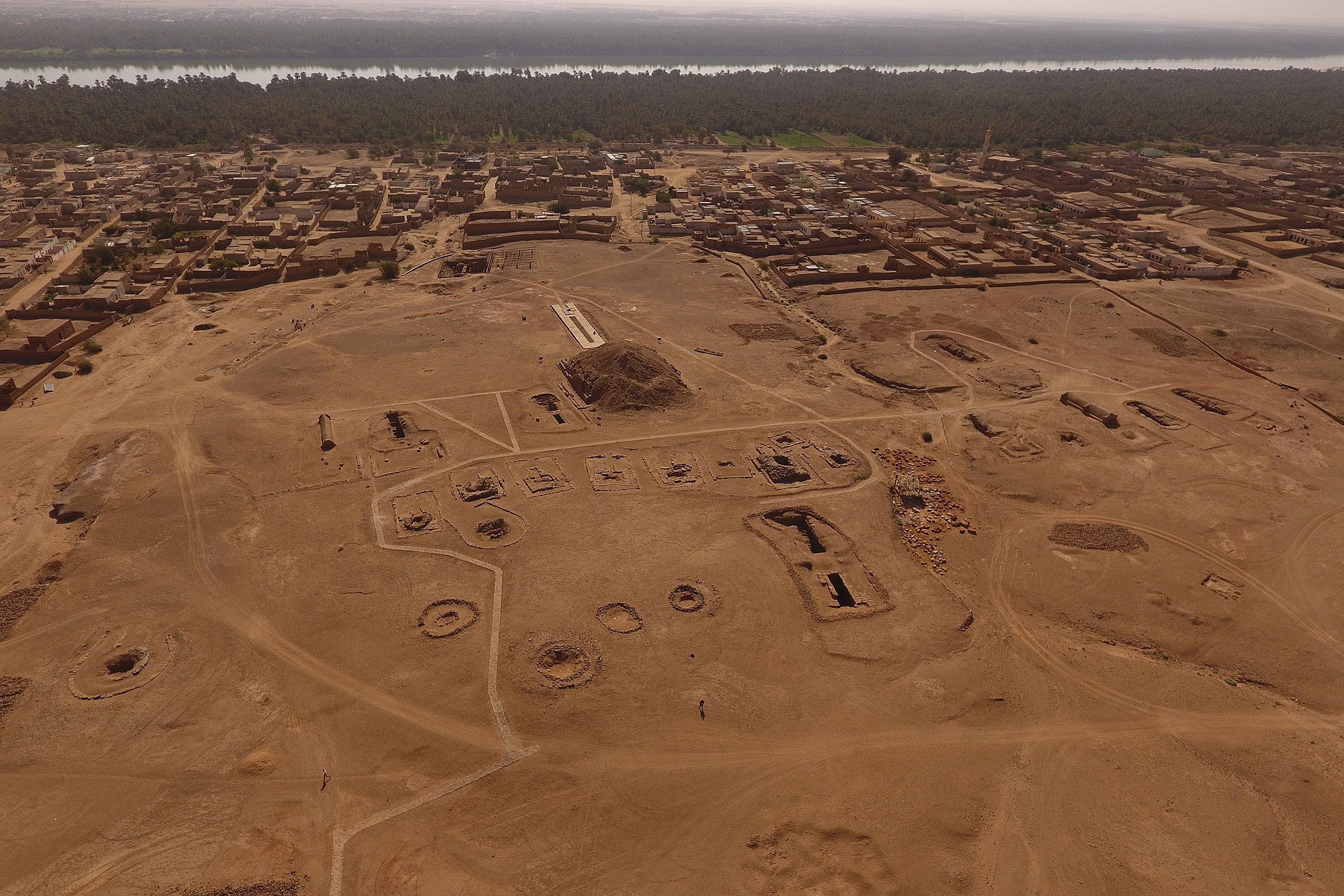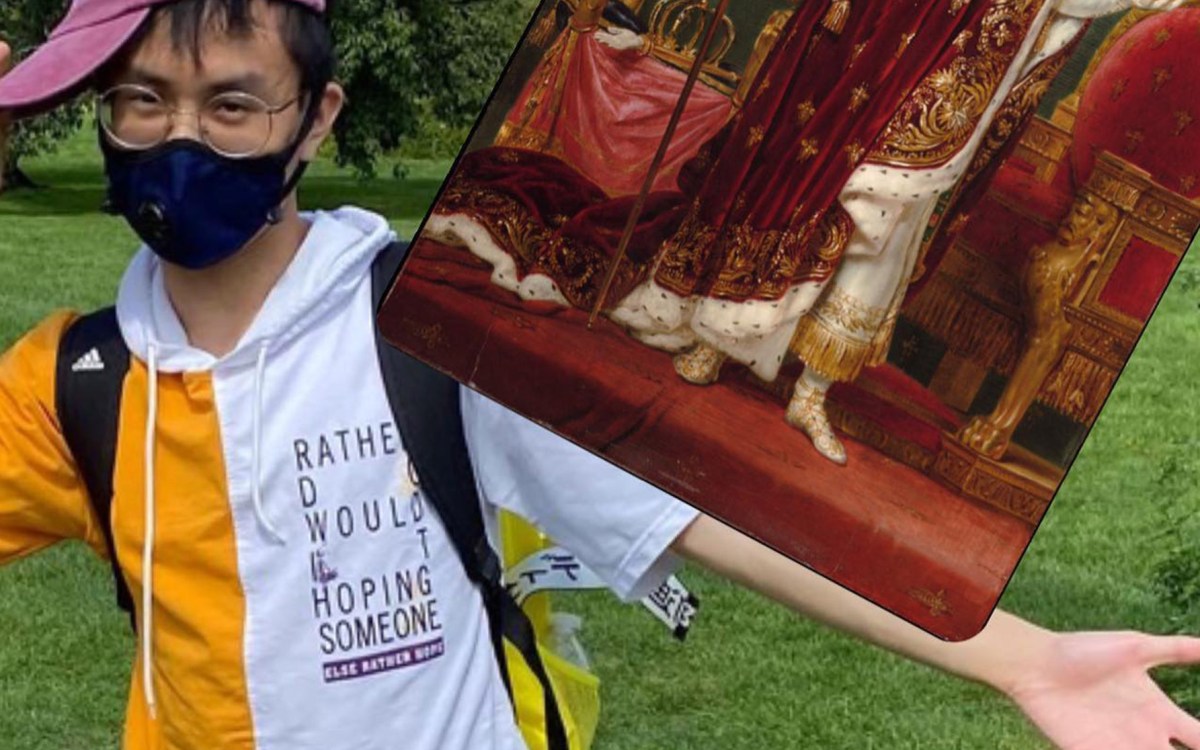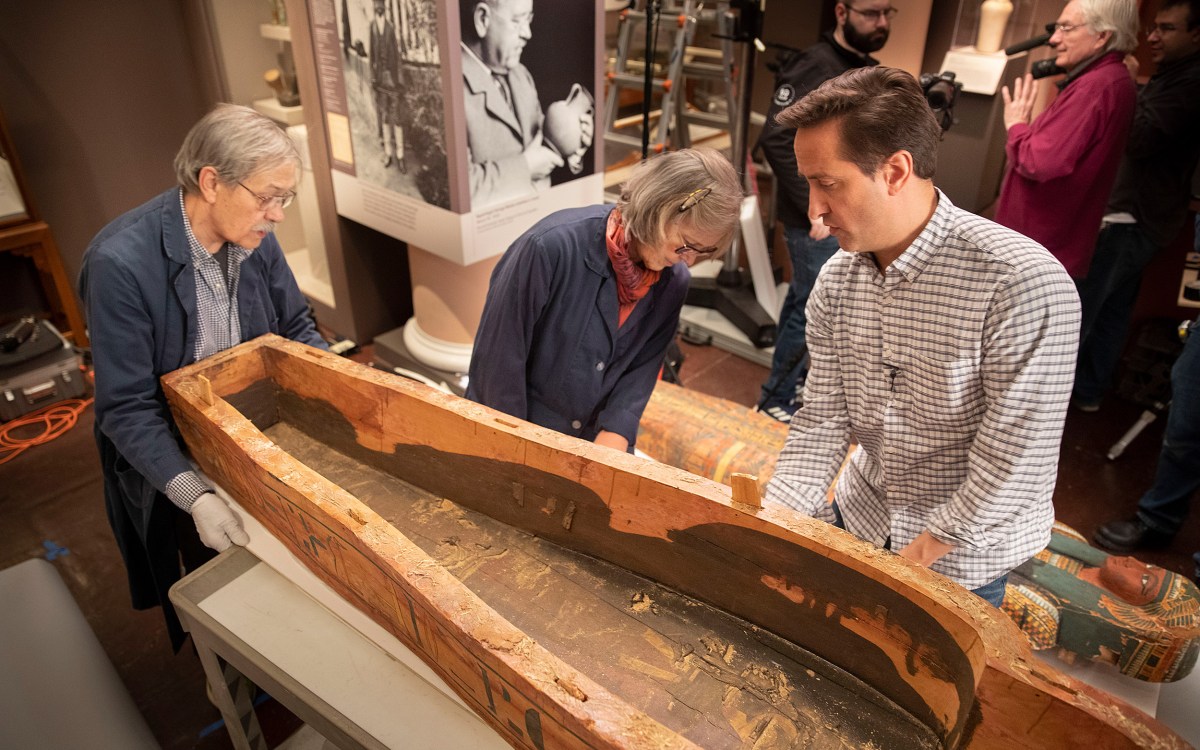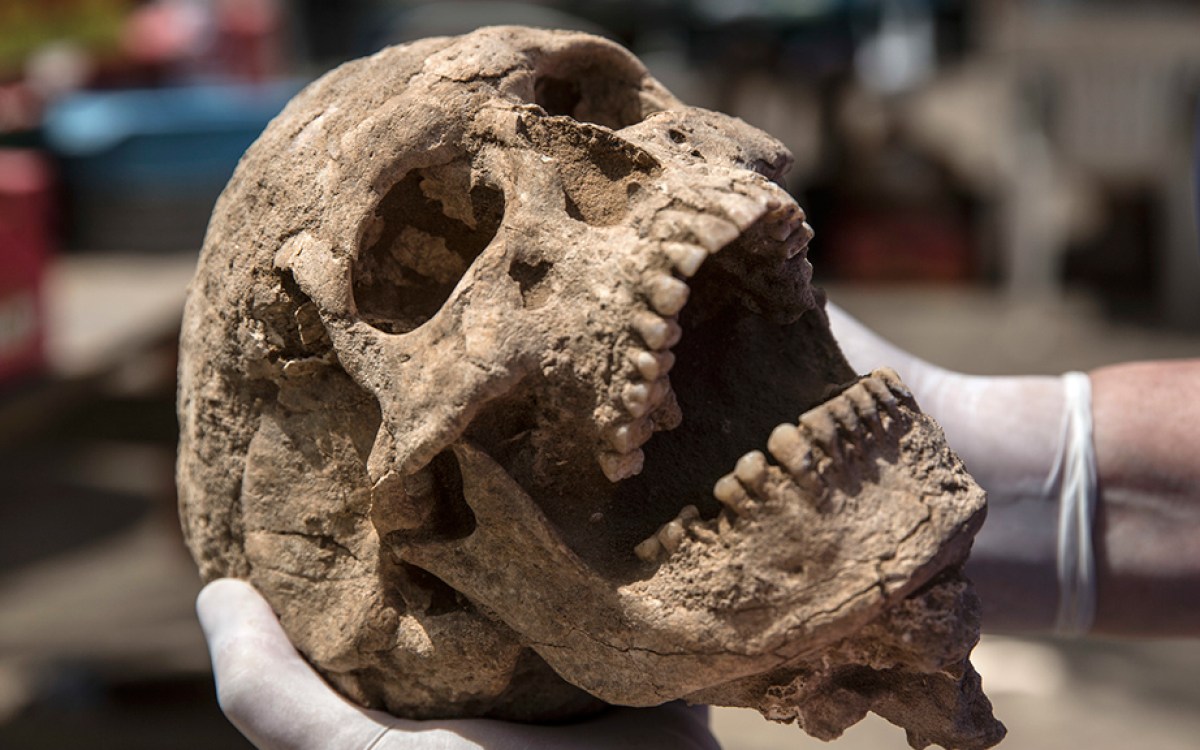
Kate Rose (left) working with colleagues at Amarna, an Egyptian archaeological site.
Photos courtesy of Kate Rose
Field and streaming
Harvard student archaeologists make virtual drop-ins to el-hi classrooms
Harvard archaeology students routinely venture into the past, traveling all over the globe in search of new knowledge. This semester, they are using the technology of today to travel into nearly 90 virtual classrooms as special guest speakers, telling more than 2,500 public and private school students and teachers from elementary, middle, and high schools about subjects ranging from ancient tombs offerings in Mexico to trade practices in the Red Sea region.
Like all the student guest speakers, anthropology Ph.D. candidate Kate Rose produced a video for the grade school students, introducing herself and her field work using animation, still photographs, video, or illustrations. Though she has excavated in Spain, Jordan, Amarna in Egypt, and Çatalhöyük, Turkey, Rose highlighted her use of drones at the Nubian pyramid site of El-Kurru on the Nile (850–650 B.C.), showing students how aerial views of royal burial sites became 3D models that may reveal insights about gender and power in this African country.
“I was excited to share my work, which uses drones and new technology to find and record sites in Sudan,” said Rose. “The kids have a concept of drones now that you can find them in toy stores, and some kids had even flown drones themselves. So, I was able to relate that to science and archaeology, and to 3D models that we use to experience the site in an accurate way.”
After each video, the young students got to engage directly with the guest speaker during a live 30-minute Zoom call that touched on favorite finds, college choices, careers, and life in the field.
The Harvard students focused on a wide array of excavations and inquiries across the globe. Grad student Sara Zaia dazzled her classes with a 3D model of an ancient Egyptian sarcophagus, revealing the painted deity inside. Andrew Bair transported his students to a 14th-century Anglo-Norman castle in Ballintober, County Roscommon, Ireland, where he used high-tech field equipment including ground-penetrating radar, magnetometry, and global-positioning systems. Sarah Loomis focused on Los Guachimontones in Jalisco, Mexico, where she analyzed cemetery and household goods to learn about gender roles from 200‒900 A.D.
Rose fielded questions about the cemeteries where her aerial research took place. “Sometimes the students would ask about mummies or skeletons. I would tell them how, when we’re studying the past, we’re also studying real people, so we are very careful, and very respectful of them.”
A drone view of El Kurru, Sudan, piloted by archaeology student Kate Rose.

Outreach by Harvard students is a win-win situation, said anthropology Professor Matt Liebmann. “It opens a door into Harvard for grade school students who otherwise might not have any experience with the University,” he said. “So it helps to demystify both Harvard and the discipline of archaeology. At the same time, it provides valuable training for our graduate students who are just embarking on careers in education.”
“One of the biggest challenges for us student archaeologists is talking to diverse audiences about our research,” said Rose. “This is good practice and helps broaden how we relate to our own research. Sharing with kids and teachers gives our own projects more meaning.”
The Harvard Museums of Science and Culture launched the pilot program in January to engage kids with social studies. “These articulate and enthusiastic grad students model the skills needed to actively explore the past and discover history,” said Polly Hubbard, director of education for the Peabody Museum of Archaeology and Ethnology and the Harvard Museum of the Ancient Near East. “Teachers looking for links to curriculum tell us they love having ancient history brought alive by field researchers. And it is not just social studies. Science teachers, vocational trade teachers, and English teachers have also responded.”
Hubbard designed the program to meet several goals.
“We are a tiny but mighty department with one staff person devoted to school programs, so we tend to think in terms of things that do double or triple duty,” she said. “When in-person fee-based school field trips were canceled due to the pandemic, we wanted to support the teachers with expertise that was live but safe, uniquely in our wheelhouse as an anthropology museum, and affordable.”
Another goal was to benefit the graduate students. They practice how to communicate effectively about archaeology, a skill that can help enlist community support for field research or attract funding. Students are paid hourly stipends and choose presentations schedules that work with their class commitments.
In anonymous follow-up surveys, the elementary to high school teachers gave the archaeology experience good marks. Several appreciated how the program met teaching standards for ancient civilizations and differentiated fiction from non-fiction; a few noted how a special program makes a big difference to remote teaching. One wrote, “We’ve been virtual since the start of the school year, and in all honesty, the idea of an educational (and free) program to switch things up for the kids was like music to our ears!”
Demand for the program has been high. Group size averages 26 per session but some presentations have had as many as a hundred students. Teachers from New England are the most frequent responders and the program has received eager requests from Florida, Washington, Canada, and England.
“Next year we hope to support requests from non-school groups like Girl Scouts and to offer more than one program per teacher,” Hubbard said. “Oh, and we hope to add more grad students. They are so great!”
The Virtual Classroom Visit with Harvard Student Archaeologists program is offered at no cost to schools through June, and will be offered again with undergraduate and graduate students starting in October 2021.







